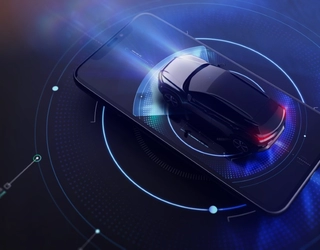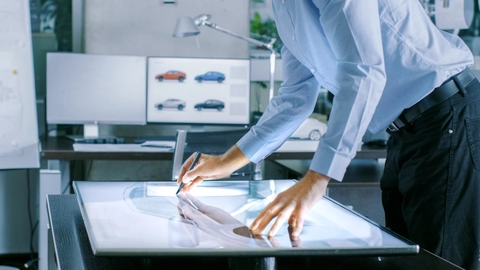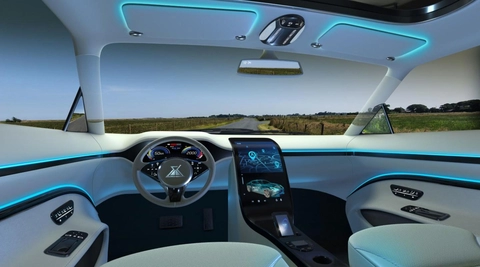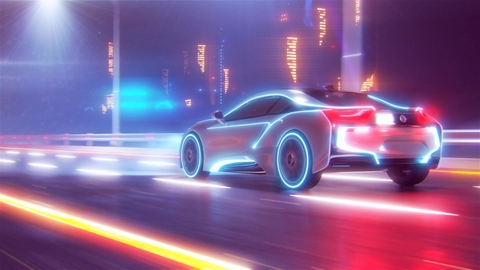
Vehicle interiors and human machine interfaces
contact us

Peter Warwick, Application Manager, and Jeffrey McClintock, Automotive Business Director, from the Displays and IME team at MacDermid Alpha Electronics Solutions, discuss the latest trends in interiors and what this means for OEMs and Tier 1s going forward.
Vehicle interiors and human machine interfaces (HMIs) have evolved in recent years. They are now key part of the driving experience. What have the driving factors behind this development been? The 2008 financial crash was a key turning point. According to McClintock. "OEMs are seeking ways to stand out in a competitive market. For the first time, we see new interior designs that merge functionality with appealing aesthetics".
Meanwhile, cars are an extension of drivers’ busy lives. Passengers use their displays and infotainment centers in a similar way to their smartphones. To interact and engage with the outside world. Vehicles bring a completely different set of challenges for OEMs and Tier 1s to the typical digital device. Unlike smartphones, consumers expect safety from their HMIs. Also, a high level of aesthetics and functionality.

Demands are growing for more functional yet stylish vehicle interiors. This means there is mounting pressure on the automotive industry to innovate.
Consumers expect new products as in other faster-paced sectors, such as consumer electronics. These expectations drive the development of displays and in-mold electronics (IME), as the industry is now seen to be leading the way.
“This caused significant disruption in the traditional automotive supply chain. OEMs seek the right material for both design and engineering requirements. Whether that is to reduce weight, save space or improve durability and reliability,” explains McClintock. For example, the sourcing of rigid printed circuit boards (PCBs) previously occurred automatically. Now we can integrate electronics into the materials and the car itself. This gives the opportunity to display competence and expertise from the electronics industry. These enable these advanced interiors.”

Despite these advances, the term ‘user experience’ is still new for the display and IME markets. OEMs and Tier 1s are now focusing on the ergonomics of HMI designs. For example, with familiar smartphone display features to swipe or slide, rather than pressing a mechanical button. Smooth, curved, 3D sculpted surfaces are now incorporated to car interiors to further add enjoyment to the user experience.
Warwick expands: “Through the clever design of channels, HMI now feature capacitive touch switches. This enhances the intuitive user experience and creates a pleasant haptic feel. OEMs are putting the user first, by considering the feel of the surface in displays more than ever.” He also notes that with safety a key priority, the latest capacitive switches implement new user interface features. These include 3D haptic features, to make it easier for drivers to manipulate the display with minimal distraction.
"Now we can integrate electronics into the materials and the car itself. This gives the opportunity to display competence and expertise from the electronics industry. These enable these advanced interiors.”
With HMIs becoming more user-focused, there is also an opportunity to create personalized displays. These provide a home-from-home driving experience.
With the growth of multi-user cars, there may be limits to the amount of personalization OEMs and Tier 1s are willing to implement. This is due to the expected high levels of wear and increased number of occupants.

Backed with a global team of experts, Warwick supports designers to make their vision a reality. He achieves this by evaluating designs for suitability and continuing that support at processors. Combined this ensures the best possible outcome.
Warwick also explains that materials must be durable and harmonized. "The geometries must be feasible, which requires influencing the design cycle as early as possible".
Looking forward, in an increasingly disruptive market, interiors has a key role to play in innovation.
The use of larger screens, multi-screens, and 3D screens, as well as seamless capacitive touch 3D surfaces will grow. This is due to consumers demanding similar interfaces in their vehicles to their smartphones.
As consumer electronics are incorporated into vehicles, the technology must be:
MacDermid Alpha Electronics Solutions is well-positioned to help address these trends. We have proven record in circuitry and assembly knowledge for consumer electronics. This coupled with our experience of formable hardcoated films are essential to bridge the gap between innovation and robustness. We are helping automotive engineers design interiors of the future.
